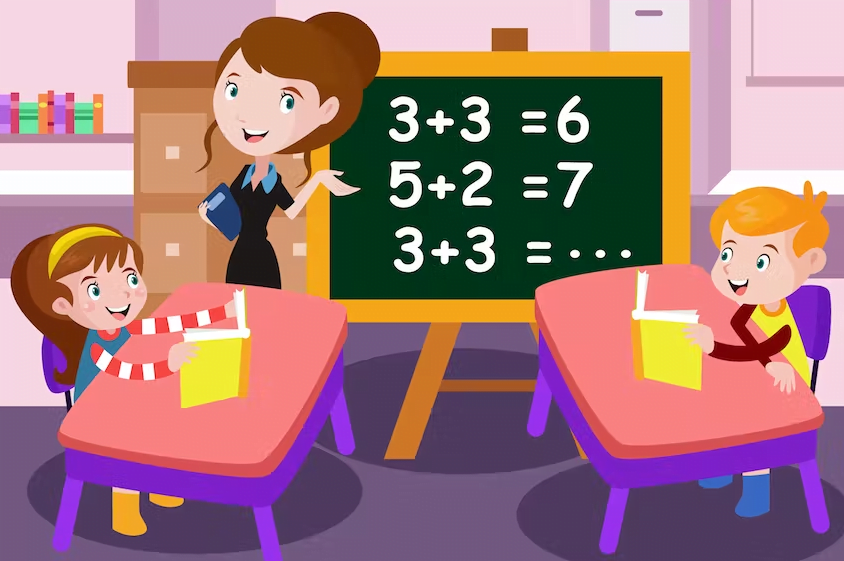culturally responsive math lesson plans, Culturally responsive teaching is an approach to education that recognizes and values the cultural backgrounds of students. This approach is particularly important when it comes to teaching math, as many students from diverse backgrounds
Culturally responsive teaching is an approach to education that recognizes and values the cultural backgrounds of students. This approach is particularly important when it comes to teaching math, as many students from diverse backgrounds may have negative experiences or misconceptions about the subject. In this article, we will explore the importance of culturally responsive math lesson plans and how they can be implemented in the classroom.
First and foremost, culturally responsive math lesson plans help to create a more inclusive and accepting learning environment for all students. By recognizing and valuing the cultural backgrounds of students, teachers can create math lessons that are more relatable and engaging for them. This can help to overcome stereotypes and negative perceptions of math that some students may have, and can promote a more positive attitude towards the subject. Furthermore, when students see their culture and experiences reflected in the curriculum, they are more likely to feel like they belong and that their culture is valued. This can lead to increased self-esteem, motivation, and a sense of pride in their cultural identity.
Secondly, culturally responsive math lesson plans can help to close the achievement gap for students from diverse backgrounds. By creating math lessons that are culturally relevant and meaningful, teachers can help to increase student engagement and motivation, which can lead to better learning outcomes. This is particularly important for students who may have experienced academic challenges in the past, as culturally responsive teaching can provide them with the support they need to succeed. Additionally, by addressing cultural and linguistic differences in the classroom, teachers can better understand their students’ learning needs and tailor instruction to meet those needs.
Thirdly, culturally responsive math lesson plans allow students to see themselves reflected in the curriculum. When students see their culture and experiences represented in the curriculum, they are more likely to feel valued, seen, and understood. This can lead to increased student engagement, motivation, and ownership of the learning process. This can help students to connect what they learn in math class to their real-world experiences, which can make it more relevant and meaningful to them. Furthermore, by providing students with a culturally responsive curriculum, teachers can help to dispel stereotypes and misconceptions that students may have about math and their own abilities in the subject.
To implement culturally responsive math lesson plans, teachers can start by incorporating a variety of culturally relevant and diverse resources into their lessons. This can include using examples from different cultures, incorporating historical and current events, and featuring diverse role models in the field of mathematics. Additionally, teachers can provide opportunities for students to share their own cultural perspectives and experiences in class discussions and group projects, which can help to create a more inclusive and accepting learning environment. Furthermore, teachers can also seek out professional development opportunities to learn more about culturally responsive teaching.
culturally relevant math lesson plans

Culturally relevant math lesson plans incorporate cultural perspectives, values, and experiences of students into the math curriculum. These lesson plans help students connect math concepts to their own lives and backgrounds, making math more engaging and meaningful. Here are some ideas for culturally relevant math lesson plans:
- Geometry and culture: Teach students about geometric patterns and shapes found in different cultures, such as Islamic art, African textiles, or Native American beadwork. Have students create their own geometric designs inspired by their cultural backgrounds.
- Math and social justice: Explore how math can be used to address social justice issues, such as calculating the costs of living in different neighborhoods or analyzing data on police brutality. Have students use math to advocate for a cause they care about.
- Math and food: Use cooking and food as a way to teach math concepts such as fractions, ratios, and measurements. Have students explore the cultural significance of different foods and how they are prepared.
- Math and music: Teach students about the mathematical concepts behind music, such as rhythm, beats, and time signatures. Have students create their own music compositions using math concepts.
- Math and storytelling: Use stories from different cultures to teach math concepts. For example, use African folktales to teach about patterns and sequences, or use Native American legends to teach about geometric shapes.
- Math and sports: Use sports statistics and data to teach math concepts such as probability, percentages, and averages. Have students analyze data from different sports and compare the statistics of different athletes.
- Math and art: Teach students about the mathematical concepts behind art, such as symmetry, proportion, and perspective. Have students create their own art pieces using math concepts.
By incorporating students’ cultural backgrounds and experiences into the math curriculum, culturally relevant math lesson plans can help make math more accessible and engaging for all students.
Culturally responsive lesson plan examples
Culturally responsive lesson plans are designed to meet the unique cultural and linguistic needs of diverse learners. A culturally responsive lesson plan includes instructional strategies that incorporate students’ cultural backgrounds, experiences, and perspectives. Examples of culturally responsive lesson plans may include the use of culturally relevant texts, the incorporation of student voices, and the use of collaborative learning strategies.
Culturally responsive math word problems examples
Culturally responsive math word problems involve incorporating students’ cultural backgrounds and experiences into mathematical word problems. These problems may be based on culturally relevant topics or use culturally specific language. Examples of culturally responsive math word problems may include problems related to family traditions, cultural celebrations, or community events.
Cultural math activities
Cultural math activities are designed to engage students in math learning while also connecting them to their cultural heritage. These activities may include the use of cultural artifacts, the exploration of cultural patterns, or the use of cultural symbols in mathematical problem-solving.
Culturally responsive math resources
Culturally responsive math resources include materials, tools, and strategies that are designed to meet the diverse needs of students. Examples of culturally responsive math resources may include culturally relevant textbooks, bilingual math resources, and culturally responsive math websites.
Culturally responsive math activities
Culturally responsive math activities are designed to engage students in math learning while also incorporating their cultural backgrounds and experiences. Examples of culturally responsive math activities may include the use of music, art, or storytelling in math instruction.
Culturally responsive teaching in math powerpoint
A culturally responsive teaching in math PowerPoint is a presentation that provides educators with strategies for incorporating culturally responsive teaching practices in math instruction. This presentation may include examples of culturally responsive math lesson plans, resources, and activities.
Culturally responsive math books
Culturally responsive math books are designed to provide students with mathematical content that is culturally relevant and engaging. These books may include stories or examples that are based on diverse cultural experiences, traditions, or perspectives.
Diversity math activities
Diversity math activities are designed to help students understand and appreciate the diverse cultures and experiences of their classmates. These activities may include the exploration of different mathematical concepts through the lens of cultural diversity, or the use of math to solve problems related to diversity and inclusion.
In conclusion, culturally responsive math lesson plans are essential for creating a more inclusive and accepting learning environment, closing the achievement gap, and allowing students to see themselves reflected in the curriculum. By incorporating culturally relevant and diverse resources, teachers can help to increase student engagement, motivation, and learning outcomes, which can lead to better educational outcomes for all students. Culturally responsive teaching is not only important for students from diverse backgrounds but also for all students, as it promotes a more inclusive, understanding and accepting classroom and society.

